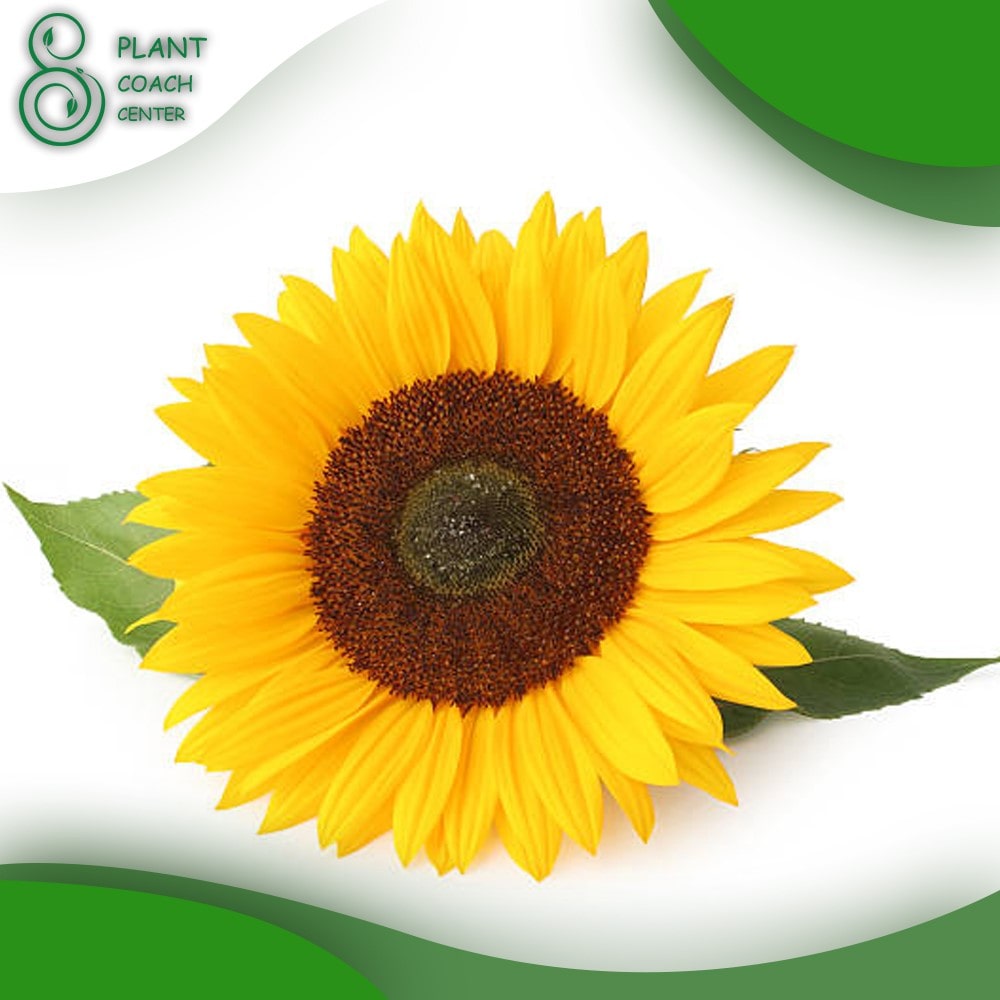When to Plant Sunflowers in Virginia
Welcome to Plant Coach Center! In this comprehensive guide, we will explore the optimal timing for planting sunflowers in Virginia. If you’re a gardening enthusiast in the beautiful state of Virginia, you’ll be delighted to learn about the best practices for growing sunflowers successfully.
Sunflowers, with their vibrant blooms and numerous benefits, are a popular choice among gardeners. Let’s dive in and discover when to plant sunflowers in Virginia and how to ensure a thriving garden filled with these stunning flowers.
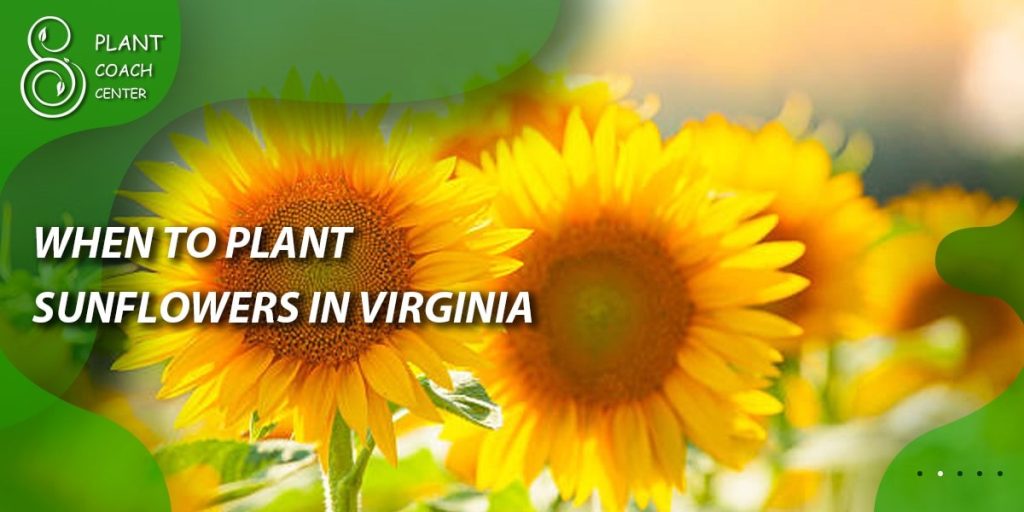
Understanding Virginia’s Climate and Planting Zones
Virginia, known for its diverse climate, offers a range of conditions suitable for growing various plant species. Before delving into sunflower planting, let’s understand the climate and planting zones in Virginia.
- Virginia’s Climate Overview
Virginia experiences a humid subtropical climate, with distinct regional variations due to its size and topography. The state enjoys four distinct seasons: spring, summer, fall, and winter. Summers are generally hot and humid, while winters vary from mild to cool, with occasional snowfall in some areas.
- USDA Plant Hardiness Zones in Virginia
The United States Department of Agriculture (USDA) has designated plant hardiness zones to assist gardeners in selecting appropriate plants for their regions. Virginia encompasses multiple zones, including Zone 5 in the mountainous regions, Zone 6 in central areas, and Zone 7 in the coastal and southern parts.
- Selecting Sunflower Varieties for Virginia’s Climate
When choosing sunflower varieties for your Virginia garden, it’s essential to consider the specific climate and planting zone. Opt for varieties that are well-suited to Virginia’s conditions, ensuring higher chances of success and optimal growth.

Factors Influencing Sunflower Planting Time
To determine the best time to plant sunflowers in Virginia, it’s crucial to consider several factors that influence their growth and development. By understanding these factors, you can ensure that your sunflowers have the ideal conditions for thriving.
- Sunflower Life Cycle and Growth Requirements
Sunflowers have a distinct life cycle that consists of several stages: germination, seedling growth, vegetative growth, flowering, and seed development. Each stage has specific requirements for light, temperature, and moisture.
– Germination: Sunflower seeds require soil temperatures between 50°F (10°C) and 86°F (30°C) for optimal germination. Warmer temperatures speed up germination, but extreme heat can hinder the process.
– Seedling Growth: Adequate moisture and moderate temperatures are essential during this stage to support healthy seedling development.
– Vegetative Growth: Sunflowers thrive in warm weather with temperatures ranging from 70°F (21°C) to 78°F (26°C). They require full sun exposure for a minimum of six to eight hours per day.
– Flowering and Seed Development: Sunflowers typically flower 70 to 100 days after planting, depending on the variety. Warm temperatures and consistent moisture are crucial during this stage for optimal flower and seed production.
- Soil Temperature Considerations
Soil temperature plays a significant role in sunflower growth and germination. It’s important to ensure that the soil has warmed sufficiently before planting sunflower seeds.
– Ideal Soil Temperature: Sunflower seeds germinate best in soil temperatures between 50°F (10°C) and 86°F (30°C). Aim for a soil temperature of at least 55°F (13°C) before planting to promote successful germination.
– Using a Soil Thermometer: To determine the soil temperature, use a soil thermometer to measure the temperature at a depth of 2 to 4 inches (5 to 10 cm). Take multiple readings in different areas of the garden to get an accurate average.
- Frost Risk and Last Frost Dates
Frost can be detrimental to sunflowers, especially when they are in their early growth stages. It’s important to consider the risk of frost and the last frost dates in your specific area to avoid potential damage to your sunflowers.
– Last Frost Dates: The last frost dates indicate the approximate date by which the risk of frost is significantly reduced. In Virginia, the last frost dates vary across different regions, typically ranging from late March to mid-May.
– Monitoring Weather Forecasts: Stay updated on weather forecasts, especially during the spring, to ensure that you plant your sunflowers after the last expected frost. Sudden cold snaps can still occur, so it’s essential to be cautious.
Determining the Optimal Planting Time
To ensure the successful growth of sunflowers in Virginia, it’s essential to determine the optimal planting time. Several methods can help you identify the best planting dates based on daylight hours, historical weather data, and soil conditions.
- The Role of Daylight Hours
Sunflowers are photoperiodic plants, meaning they rely on the length of daylight to trigger specific growth stages. Understanding the relationship between daylight hours and sunflower growth can guide you in determining the best time to plant.
– Long Day vs. Short Day Varieties: Sunflowers are classified as either long day or short day varieties. Long day varieties require more daylight hours to initiate flowering, while short day varieties require fewer hours.
– Daylight Hour Considerations: In Virginia, the daylight hours increase as spring progresses, peaking during the summer solstice in late June. Planting sunflowers a few weeks before the peak daylight period can ensure optimal growth and flowering.
- Using Historical Weather Data
Examining historical weather data can provide valuable insights into temperature patterns and frost occurrences, helping you make informed decisions about sunflower planting.
– Local Weather Records: Access local weather records or consult reputable weather websites to gather information on average temperatures and frost occurrences in your area.
– Temperature Trends: Look for temperature trends that indicate the general warming of the soil and air. This information can guide you in determining when to plant sunflowers for optimal growth.
- Monitoring Soil Conditions
Assessing soil conditions is crucial for successful sunflower planting. By monitoring soil moisture and temperature, you can ensure that the conditions are favorable for germination and early growth.
– Soil Moisture: Sunflowers require well-draining soil that retains moisture without becoming waterlogged. Check the soil moisture levels regularly and aim for a slightly moist but not overly saturated soil.
– Soil Temperature: Continuously monitor the soil temperature to ensure it has reached the ideal range for sunflower germination. Use a soil thermometer to take accurate readings at the desired planting depth.

Recommended Planting Dates for Sunflowers in Virginia
To achieve the best results when planting sunflowers in Virginia, it’s important to follow recommended planting dates based on the seasons. Here, we will explore the optimal planting times for sunflowers during the early spring, late spring, and summer.
- Early Spring Planting
Early spring planting is suitable for gardeners who wish to get a head start on their sunflowers and take advantage of the cooler temperatures.
– Recommended Planting Time: In Virginia, early spring planting for sunflowers typically occurs from late March to early April, depending on the specific location and weather conditions.
– Considerations: Keep in mind that the risk of late frosts still exists during this period, so be prepared to protect your sunflower seedlings if unseasonably cold temperatures are forecasted.
- Late Spring Planting
Late spring planting is a popular choice for many gardeners, as the soil and air temperatures have warmed up, reducing the risk of frost.
– Recommended Planting Time: In Virginia, late spring planting for sunflowers usually takes place from mid-April to early May. By this time, the soil has warmed sufficiently, creating favorable conditions for germination and growth.
– Benefits: Late spring planting allows sunflowers to take advantage of the longer daylight hours and warmer temperatures, promoting vigorous growth and blooming.
- Summer Planting
Summer planting is an option for gardeners who prefer a later planting date or want to extend the sunflower season.
– Recommended Planting Time: In Virginia, summer planting for sunflowers typically occurs from late May to early June. By this time, both the soil and air temperatures are warm, providing optimal conditions for sunflower growth.
– Considerations: Keep in mind that summer planting may require additional attention to watering, as sunflowers are more susceptible to drying out during hot summer months.
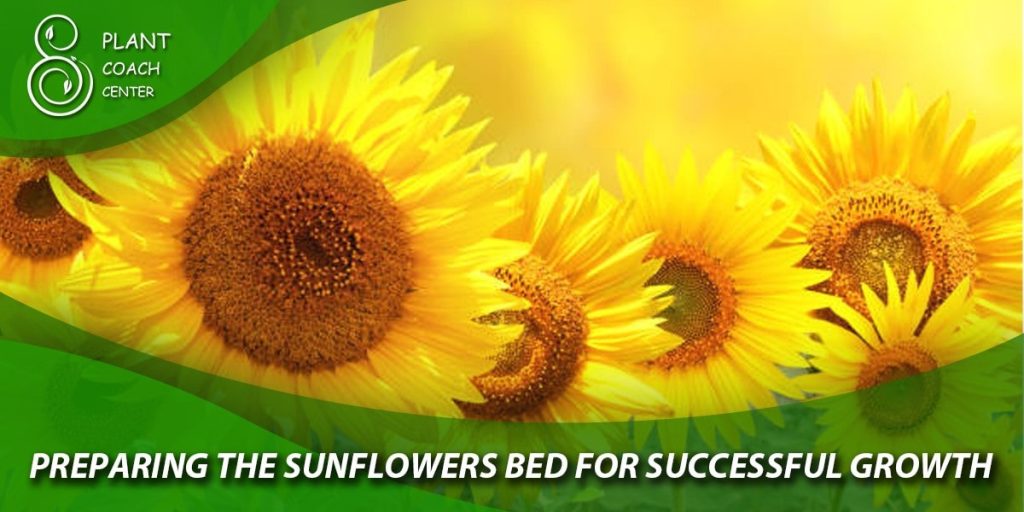
Preparing the Sunflower Bed for Successful Growth
Proper preparation of the sunflower bed is crucial for creating an ideal environment that promotes healthy growth and robust blooms. Let’s explore the essential steps involved in preparing the sunflower bed in Virginia.
- Site Selection
Selecting the right location for your sunflower bed is key to ensuring optimal growth and development. Consider the following factors when choosing a site:
– Sunlight: Sunflowers thrive in full sun, so select a location that receives at least six to eight hours of direct sunlight daily.
– Soil Drainage: Choose a well-draining site to prevent waterlogging, as sunflowers are susceptible to root rot in overly saturated soil.
– Wind Protection: While sunflowers enjoy sunlight, strong winds can damage their tall stems. Consider planting sunflowers near a fence or in a location that provides some wind protection.
- Soil Preparation
Preparing the soil properly sets the foundation for healthy sunflower growth. Follow these steps to prepare the soil:
– Clear the Area: Remove any weeds, rocks, or debris from the planting area to create a clean space for your sunflowers.
– Loosen the Soil: Use a garden fork or tiller to loosen the soil to a depth of 8 to 12 inches (20 to 30 cm). This promotes good root development and allows for proper drainage.
– Amend the Soil: If your soil lacks fertility or has poor drainage, consider incorporating organic matter, such as compost or well-rotted manure, to improve its quality.
- Spacing and Planting
Proper spacing ensures that each sunflower has enough room to grow and access necessary nutrients. Follow these guidelines for spacing and planting:
– Spacing: Leave ample space between sunflower plants to prevent overcrowding and competition for resources. Provide a spacing of 12 to 24 inches (30 to 60 cm) between each plant, depending on the variety’s mature size.
– Planting Depth: Plant sunflower seeds at a depth of 1 to 2 inches (2.5 to 5 cm) in the prepared soil. If transplanting seedlings, ensure the root ball is covered with soil and the stem is at ground level.
– Watering: After planting, water the sunflower bed thoroughly to settle the soil and encourage seed germination. Maintain consistent moisture throughout the growing season, especially during dry periods.
- Mulching and Maintenance
Applying mulch around sunflowers helps retain soil moisture, suppress weed growth, and regulate soil temperature. Consider the following maintenance practices:
– Mulching: Apply a layer of organic mulch, such as straw or wood chips, around the base of sunflowers, leaving a small space around the stem to prevent moisture-related diseases.
– Watering: Water sunflowers deeply and regularly, especially during dry spells. Aim to keep the soil evenly moist but not waterlogged.
– Weed Control: Regularly remove weeds from the sunflower bed to minimize competition for nutrients and water.
– Support Structures: As sunflowers grow tall, consider providing support structures like stakes or trellises to prevent them from toppling over in strong winds.
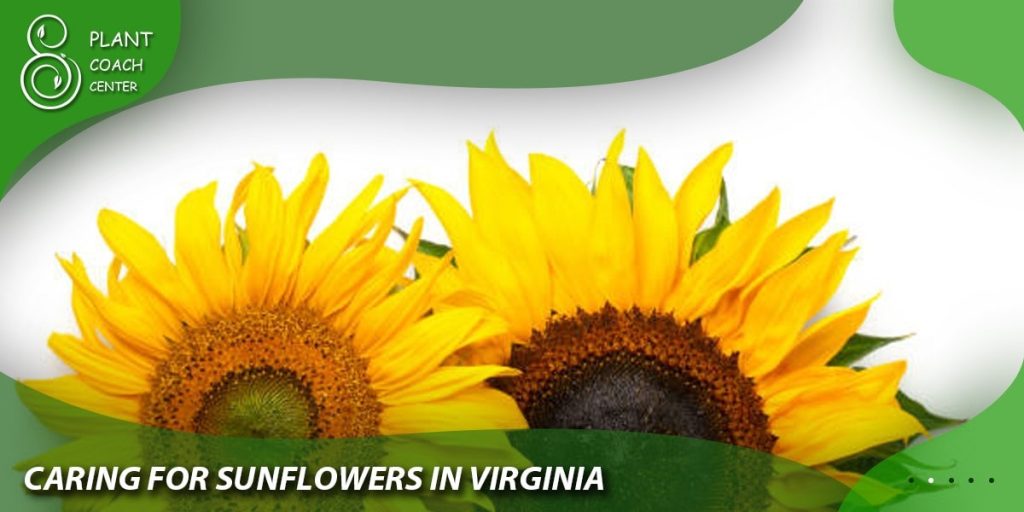
Caring for Sunflowers in Virginia
Once your sunflowers are planted and established, proper care is essential to support their growth, health, and eventual blooming. Let’s explore the key aspects of caring for sunflowers in Virginia.
- Watering
Proper watering is crucial for sunflower growth, especially during dry periods. Follow these watering guidelines:
– Soil Moisture: Sunflowers require consistent soil moisture to thrive. Monitor the soil moisture levels regularly and water deeply when the top inch (2.5 cm) of soil feels dry.
– Watering Frequency: Water sunflowers deeply about once or twice a week, providing enough water to penetrate the root zone. Adjust the frequency based on weather conditions and soil moisture levels.
– Watering Method: Water at the base of the plants, aiming to keep the foliage dry. Avoid overhead watering, as it can lead to leaf diseases and fungal issues.
- Fertilization
Sunflowers generally have moderate fertilizer requirements. Follow these guidelines for fertilizing your sunflowers:
– Soil Testing: Conduct a soil test to determine the nutrient levels in the soil. Based on the results, you can adjust the fertilizer application accordingly.
– Balanced Fertilizer: Use a balanced fertilizer with equal ratios of nitrogen (N), phosphorus (P), and potassium (K). Apply according to the manufacturer’s instructions or based on the soil test recommendations.
– Timing: Apply the fertilizer before planting or during the early growth stages. Avoid excessive nitrogen fertilization, as it can lead to lush foliage but fewer flowers.
- Pest and Disease Management
Sunflowers are generally resilient plants, but they can be susceptible to certain pests and diseases. Here are some tips for managing common issues:
– Pest Control: Monitor the sunflowers regularly for pests such as aphids, caterpillars, or snails. Use organic pest control methods like handpicking or using insecticidal soaps or neem oil if necessary.
– Disease Prevention: Provide adequate spacing between sunflowers to allow for good air circulation, which helps prevent fungal diseases. Remove any infected plant debris promptly to prevent the spread of diseases.
– Common Diseases: Watch out for diseases like powdery mildew and downy mildew. If detected, treat with appropriate fungicides following the instructions on the product label.
- Harvesting Sunflowers
Harvesting sunflowers is an exciting part of the process. Here’s how you can determine the optimal time for harvesting:
– Flower Maturity: Sunflowers are ready for harvest when the back of the flower head turns brown or yellow and the seeds are plump and fully developed.
– Harvesting Method: Cut the flower head from the stem, leaving a few inches of stem attached. Hang the harvested sunflowers upside down in a dry, well-ventilated area to dry further.
– Seed Collection: Once the flower heads are fully dry, gently rub or brush the seeds off the head. Store the seeds in a cool, dry place in airtight containers.
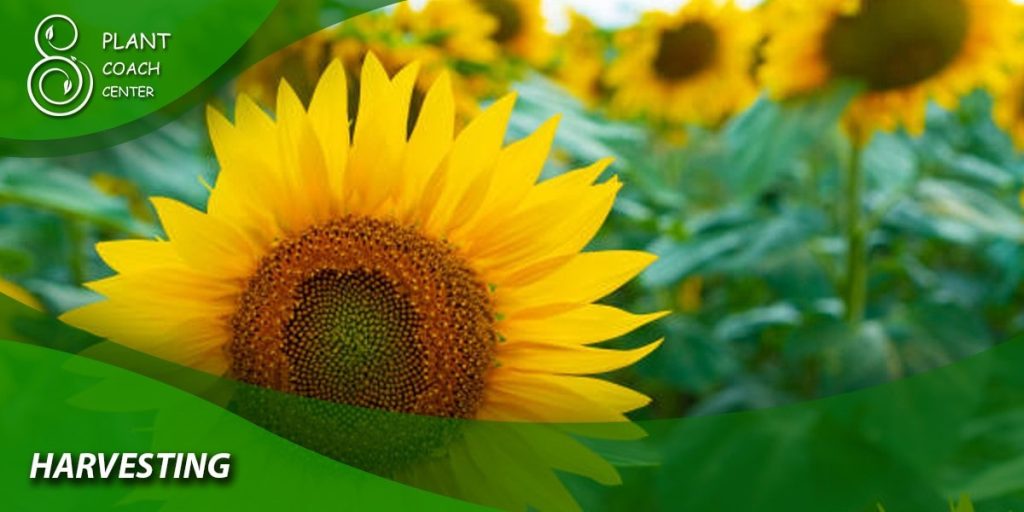
Conclusion
Congratulations on learning about the recommended planting dates and essential care tips for sunflowers in Virginia! By following these guidelines, you can cultivate thriving sunflower plants and enjoy their vibrant blooms. Here are a few additional tips to enhance your sunflower-growing experience:
Remember to visit PlantCoachCenter.com for more information and resources on plant coaching and gardening tips. Happy gardening!


